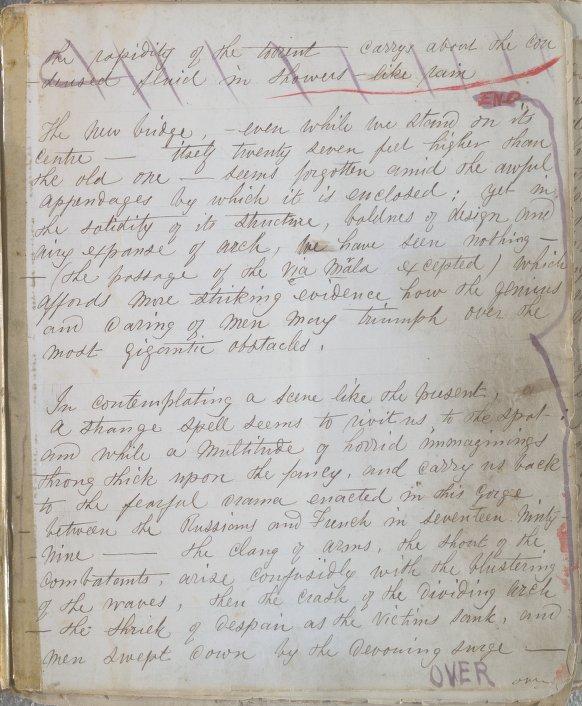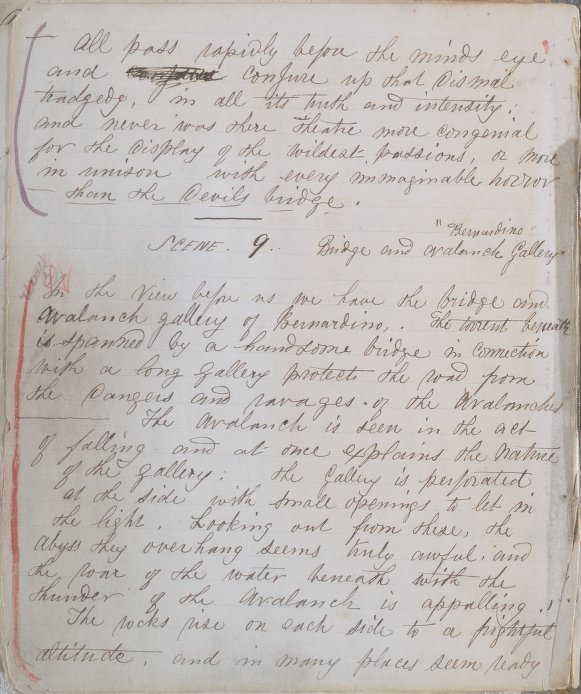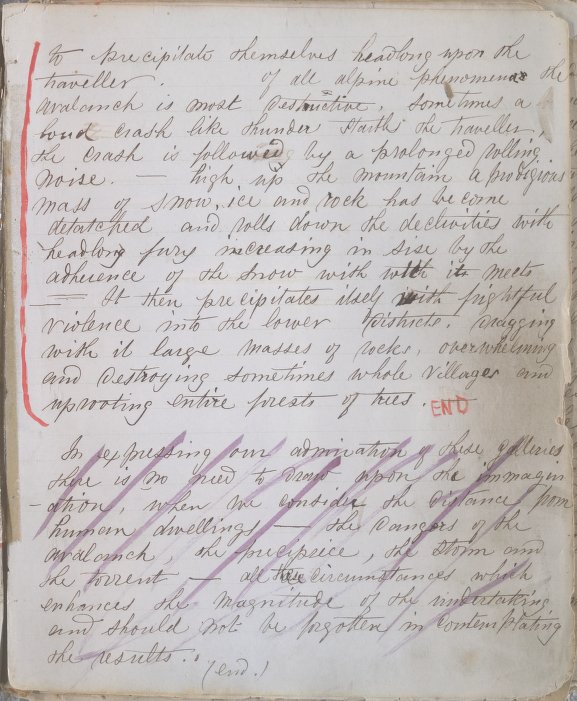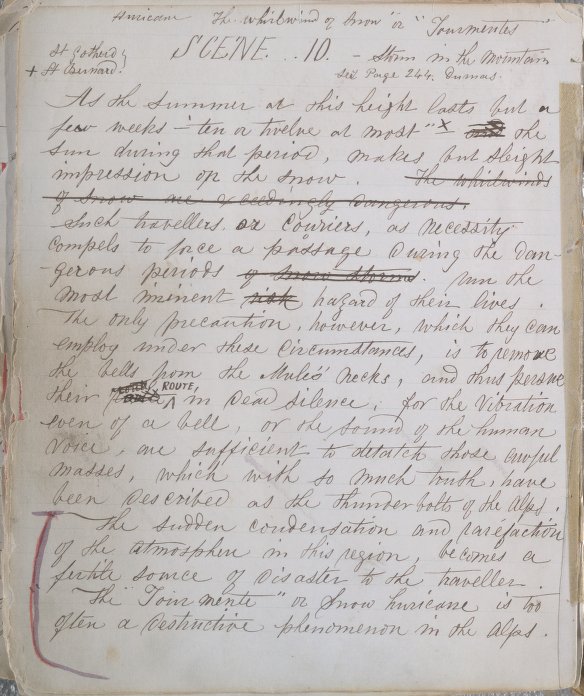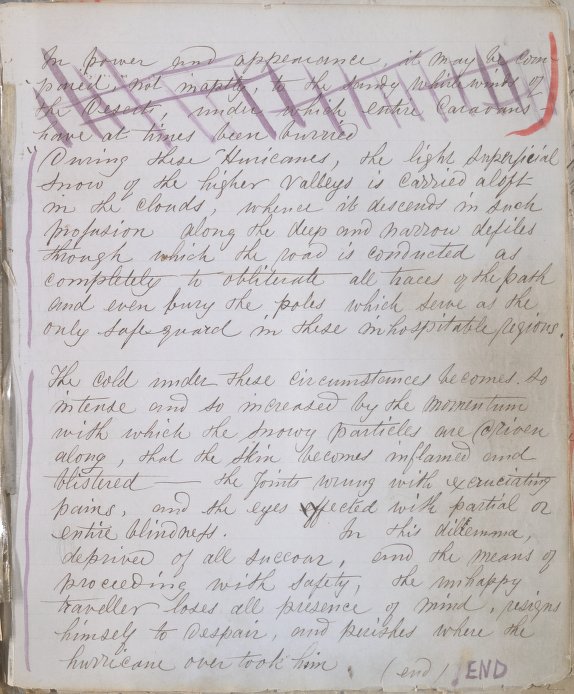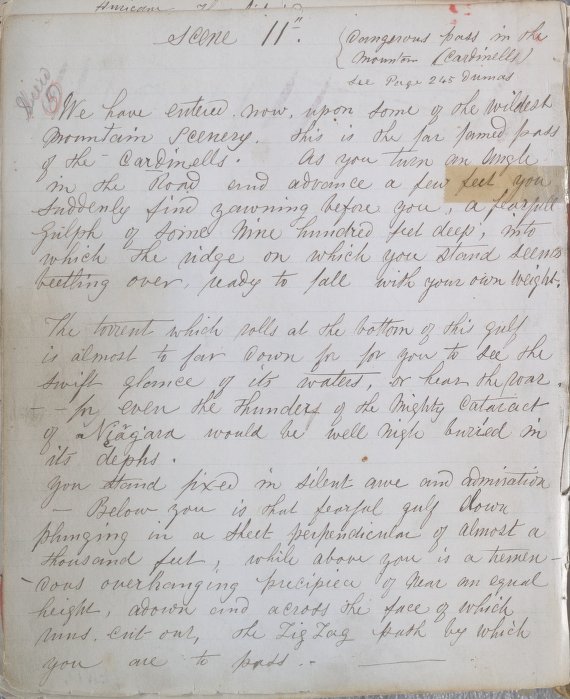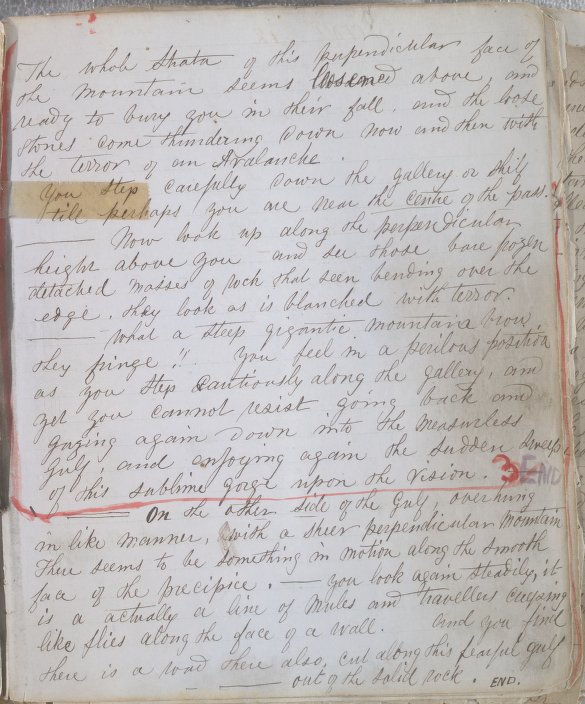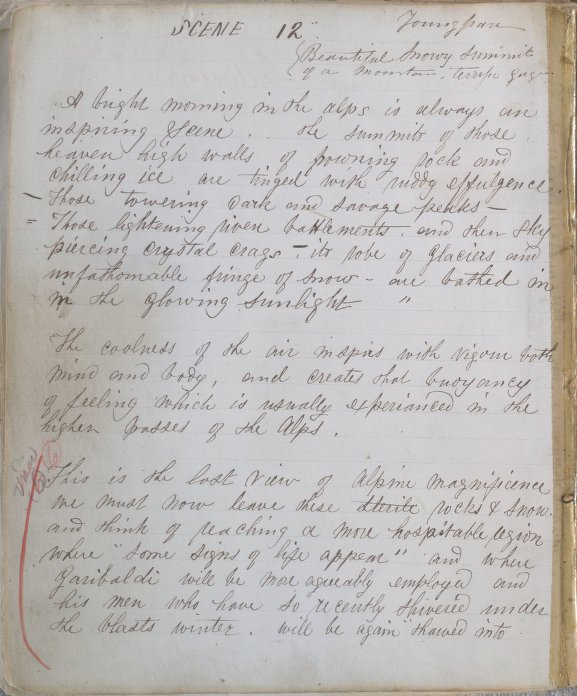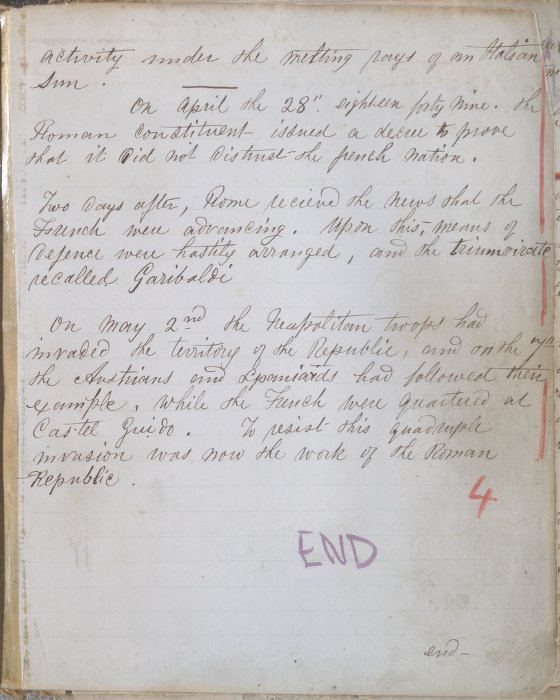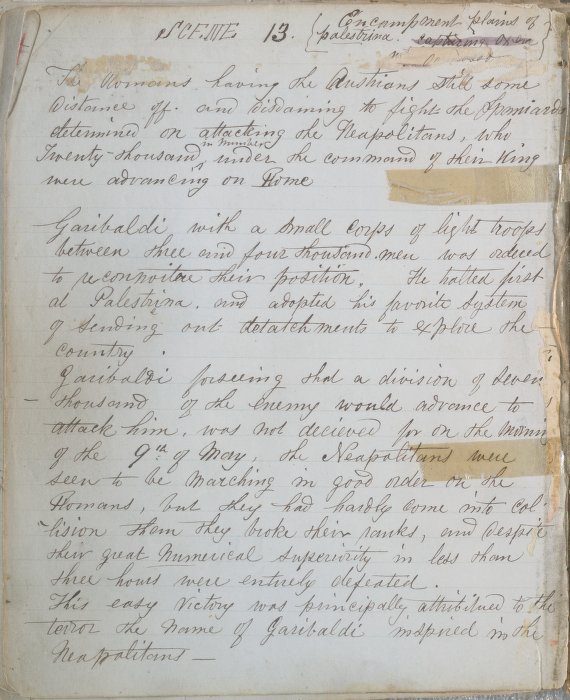Page 41
the rapidity of the torrent carrys about the con
densed fluid in showers like rain.
The new bridge,—even while we stand on its
centre—itself twenty-seven feet higher than
the old one—seems forgotten amid the awful
appendages by which it is enclosed: yet in
the solidity of its structure, boldness of design and
airy expanse of arch, we have seen nothing —
—(the passage of the via mala excepted) which
affords more striking evidence how the genius
and daring of men may triumph over the
most gigantic obstacles.
In contemplating a scene like the present, a
a strange spell seems to rivit us to one spot:
and while a multitude of horrid immaginings
throng thick upon the fancy, and carry us back
to the fearful drama enacted in this gorge
between the Russians and French in seventeen ninty-
nine—the clang of arms, the shout of the
combatants, arise confusedly with the blustering
of the waves, then the crash of the dividing arch
—the shriek of despair as the victims sank, and
men swept down by the devouring surge—

